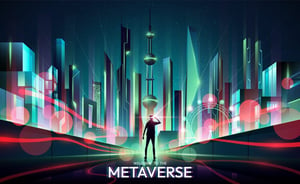It’s relatively easy to imagine how fashion and lifestyle brands will capitalize on the Metaverse, but CPG? Will consumers really need a virtual bar of soap or gallon of milk? Probably not, but that’s not the point. Forward looking CPG brands will find the Metaverse a lucrative place to engage.
Think of the Metaverse not as a single place, specific technology, nor unique platform but as a concept viewed through the lens of a consumer or a brand. For consumers, the Metaverse represents new ways to work, play, connect, transact and more – it’s the next evolution of how we integrate new technologies, virtual worlds, AR/VR/XR, NFTs, gaming, and blockchain (often referred to as Web3) into all aspects of our lives.
For brands, the Metaverse represents new ways to target, engage, enable and transact. Interactions with consumers will be more experiential than traditional marketing, changing brand building and the path to purchase as consumers move from simply being receivers/viewers of information to participants, owners and creators.
So how does CPG activate? First, by understanding that experience, access, community, self-expression and ownership are core reasons why consumers are in the metaverse and then figuring out how to authentically engage.
.jpg?width=3000&height=2000&name=Untitled%20design%20(26).jpg)
Brands can enable consumers to have experiences that are new or better. If you’re into horse racing, now you can own and race your own digital horse as Stella Artois enabled consumers to do partnering with ZedRun. Brands can leverage NFTs to offer access in unique ways, unlocking products and rewards, as Clinique did with MetaOptimist in their effort to modernize loyalty. Brands can better engage with consumers by enabling them to be part of a community like Unilever’s Hellmann’s condiment brand did working with Animal Crossing: New Horizons to build a brand-sponsored island. Brands can help consumers self-express their identity, as Coca-Cola did with part of their Friendship Box supporting the Special Olympics.
Purchasers of the NFT received a “custom-designed Coca-Cola Bubble Jacket wearable, illuminated with effervescent fizz, purposely featuring a futuristic look with subtle nods to Coke’s nostalgic delivery uniforms.” Finally, consumers can connect and make their voices heard in new ways. For instance, gmgn supply company is building a DAO (decentralized autonomous organization) of 100 community-based CPG brands, where members will be able to participate in and vote on decisions for product selection, branding, pricing, product development, and more.
Similarly to when brands added the internet to their existing marketing plans in the late 90’s, and then later added social/local/mobile, they are now going to need to add the metaverse and be thoughtful about concepts such as collaborations, community, interoperability, identity and co-creation.
More traditional channels such as TV, print, in-store, social and more won’t go away, but as the next generation of consumers emerge, they will change. Not only in terms of their reach and effectiveness, but also in how they complement, drive, or take a back seat to experiential engagements that brands have with consumers in virtual worlds. Now is the time to learn what works for your brand(s).
Article written by Pilot44’s Jon Corshen, reposted with permission from Consensus


